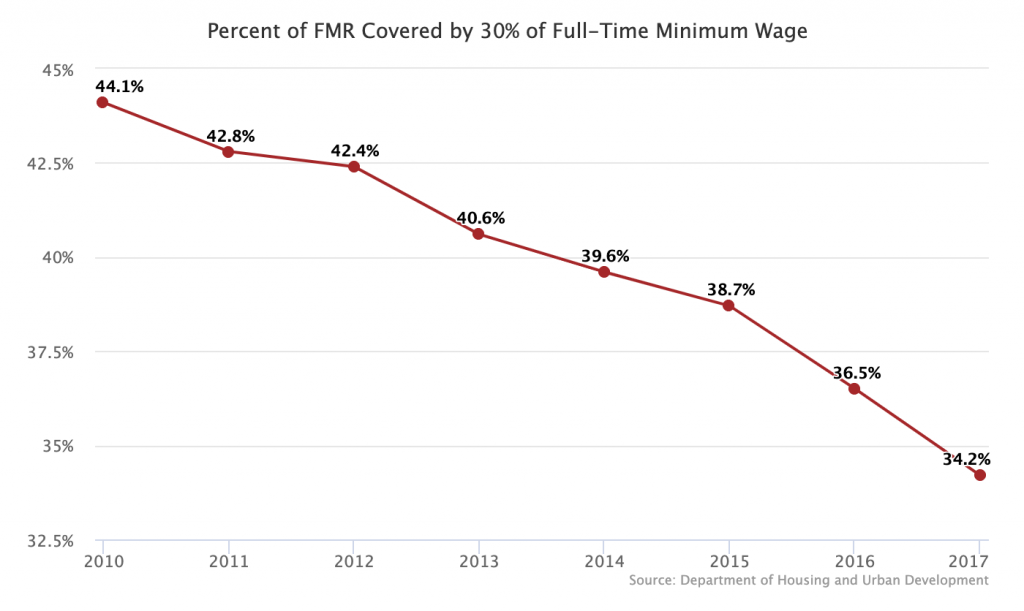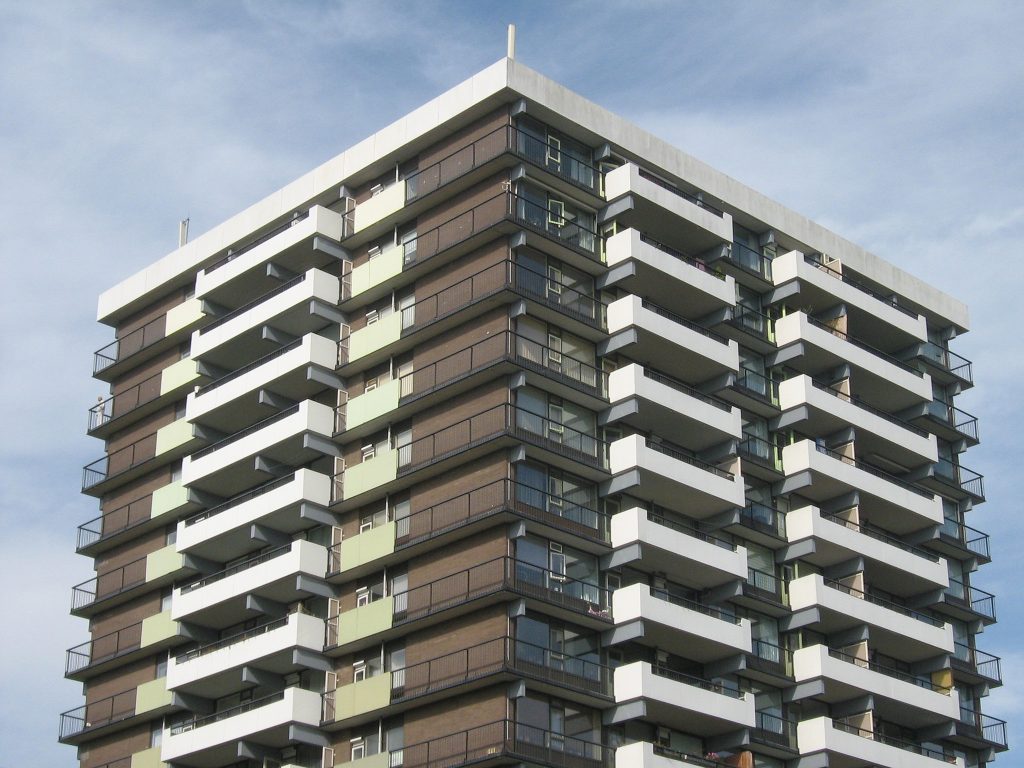A bill introduced in the House earlier this year by Rep. Keith Ellison points to a crisis affecting an increasing number of US families — housing is quickly becoming less affordable. Many Americans struggle to balance rent and daily living costs, but the burden is ever increasing for low-wage workers who have seen both a rise in rental housing costs and stagnant wages. The situation is being exacerbated by a lack of action by the Trump administration – and further still by the scrapping of Obama-era housing initiatives.
The Housing Affordability Gap
A lack of affordable housing units is a crisis currently affecting every state and metropolitan area in the country, with extremely low-income (ELI) households (those at 30 percent of Area Median Income) being hit the hardest. While Housing and Urban Development (HUD) programs like the Housing Choice Voucher Program (HCVP) provide some financial assistance, only 25 percent of eligible households actually receive any sort of HUD-funded housing benefits. In many communities, the wait lists for voucher programs are often several years long and 53 percent of housing agencies have closed their lists to new applicants. Unlike other safety net programs which use financial qualifiers to give people access to benefits, housing subsidies and vouchers are often based on a random lottery system instead of a needs-based assessment.
Fair Market Rent, or FMR, is the standard used by HUD to determine 40th percentile rents for units (broken down by number of bedrooms) in each county and metropolitan area of the country. While this number is primarily used to determine payment standards for housing voucher and subsidy programs, we use it here to compare the rising costs of housing over time. Though many will argue that looking at 40th percentile rents is not indicative of what low-wage earners are paying in rent, this is not entirely true. In fact, 75 percent of ELI renters spend more than half their income on rent, causing them severe housing-cost burden.
The national average FMR for a two-bedroom rental unit in 2017 was $1,103, but it should be noted that there is high variance in FMR since housing in some localities and metropolitan areas are much more expensive. In the Seattle area, for example, FMR on a two-bedroom unit is $1,527. However, the minimum wage in that area is also much higher, which offsets some of the high housing costs. The District of Columbia is another high-cost housing area that has approved raising the minimum wage to $15/hour.
While these local examples of raised minimum wages are encouraging, the nominal federal minimum wage has remained flat for the past eight years (declining in real terms), and rents across the country have been rising. The average FMR for a two-bedroom unit has risen from $928 in 2009 to $1,103 in 2017, meaning the value of the minimum wage has been steadily declining with aggressive spikes in housing costs.
| Year | Federal Min Wage | Average FMR | Wage Needed to Afford FMR |
| 2009 | $8.30 | $928 | $17.85 |
| 2010 | $8.13 | $959 | $18.44 |
| 2011 | $7.91 | $960 | $18.46 |
| 2012 | $7.73 | $949 | $18.25 |
| 2013 | $7.62 | $977 | $18.79 |
| 2014 | $7.49 | $984 | $18.92 |
| 2015 | $7.49 | $1,006 | $19.35 |
| 2016 | $7.41 | $1,056 | $20.30 |
| 2017 | $7.25 | $1,103 | $21.21 |
| Fair Market Rate is for 2-bedroom units. Affordability is defined as spending 30 percent of earnings on housing. Minimum-wage earnings is calculated as minimum wage times 2080 hours. All figures adjusted to 2017 dollars with CPI. | |||
The federal minimum wage of $7.25/hour is about $14/hour less than what is needed to rent an average two-bedroom unit, based on the national FMR. Currently 2.2 million workers are working at or below the federal minimum wage. This means households with two full-time workers earning minimum wage cannot afford a two-bedroom unit. In fact, in only 12 of the 3,000+ counties in the country can a minimum wage worker afford a modest one-bedroom unit without becoming cost-burdened. More than 11 million renter households spend more than half of their income on housing, based on analysis of the 2015 American Community Survey, meaning they are considered by HUD to be severely housing-cost burdened.

The Potential Solutions
While there is no one-size-fits-all solution for the affordable housing crisis, we can see potential in some combination of increased federal minimum wage and funding effective HUD projects to bolster the share of affordable housing. Here are just a few proposals that could get us closer to this goal:
- Raising the federal minimum wage to $15/hour puts struggling families much closer to making ends meet with housing costs on the rise. Based on the numbers, a family of two full-time workers would be able to afford the two-bedroom FMR in all but two states (California and Hawaii) and the District of Columbia.
- Increase funding for HUD programs like HCVP, which not only provide shelter but afford families the ability to live in higher-opportunity areas. Studies, like those by Raj Chetty, show that children who grow up in low-poverty neighborhoods do better in a number of life domains, including health, education, and lifetime earnings. Recent rollbacks by the Trump administration of promising HUD initiatives are moving in the opposite direction of what we need to achieve more affordable housing units and decrease the number of homeless families.
- Keith Ellison’s Common Sense Housing Investment Act (H.R. 948) reforms the mortgage interest deduction so that it better serves low- and moderate-income homeowners and reinvests the savings to help more families struggling to pay their rent.
- Proposals like rental credits for landlords who reduce rent for ELI households so that they can avoid becoming housing cost-burdened, thus reaching those with the highest need and creating tax incentives for rental unit owners.

